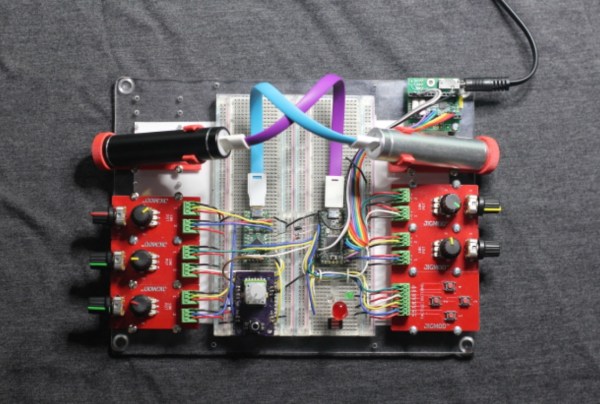Don’t worry, the rhythms themselves aren’t random! That would hardly make for a useful drum machine. [kbob]’s creation does have the ability to randomly generate functional rhythms, though, and it’s all done on a breadboard.
The core of this tiny drum machine is two Teensy dev boards. One is an FM synth tuned to sound like drums, and the other is a random rhythm generator with several controls. The algorithms are from Mutable Instruments’ open source Eurorack modules. The entire thing fits on a breadboard with JIGMOD modules for the user interface. The machine runs on lithium batteries in the form of USB cell phone chargers. The battery holders were designed in Fusion 360 and 3D printed.
The function of the drum machine is pretty interesting as well. There are a set of triggers tied to the buttons on the machine. When a button is pressed, the drum machine plays that sound at the appropriate time, ensuring there are no offbeat beats. The potentiometers are polled once every millisecond and the program updates the output as required. There’s also a “grid” of rhythms that are controlled with two other knobs (one to map the X coordinate and the other for the Y) and a “chaos” button which adds an element of randomness to this mapping.
The modular nature of this project would make this a great instrument to add to one’s musical repertoire.It’s easily customizable, and could fit in with any of a number of other synthesizer instruments.
Continue reading “Modular Drum Machine Creates Random Rhythms”















